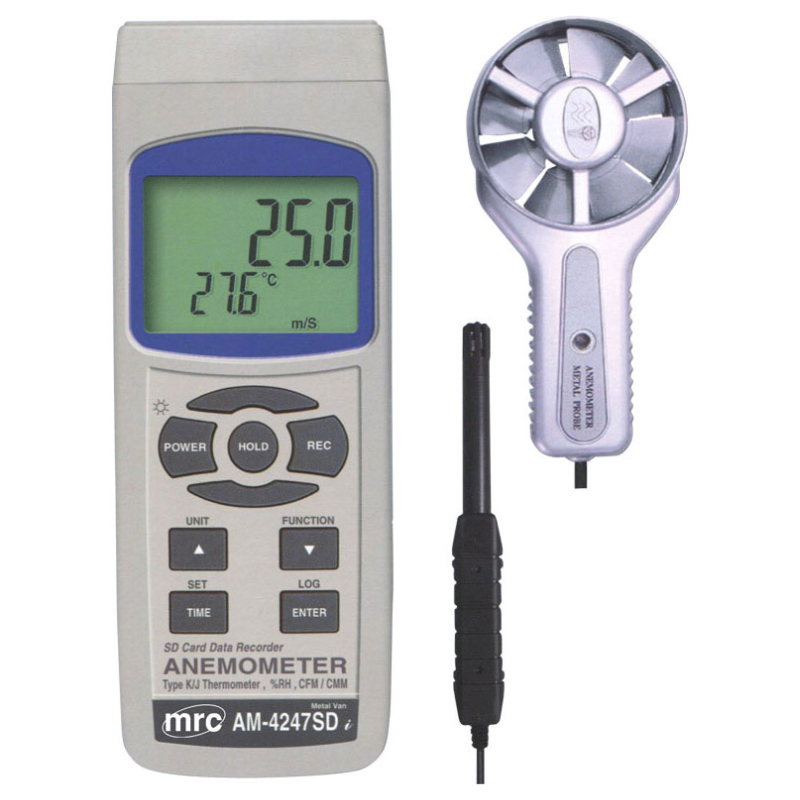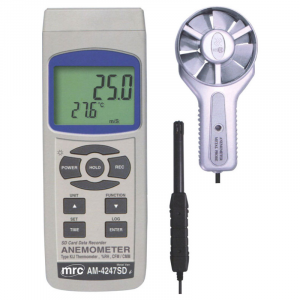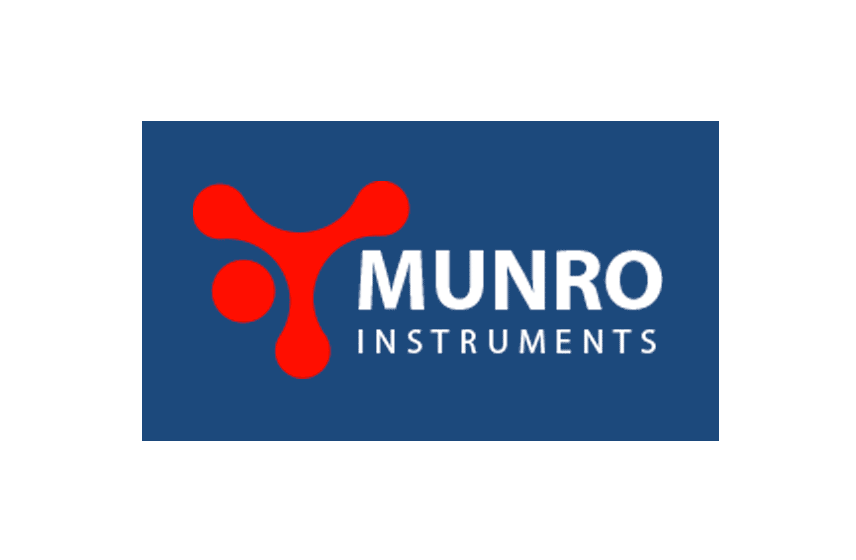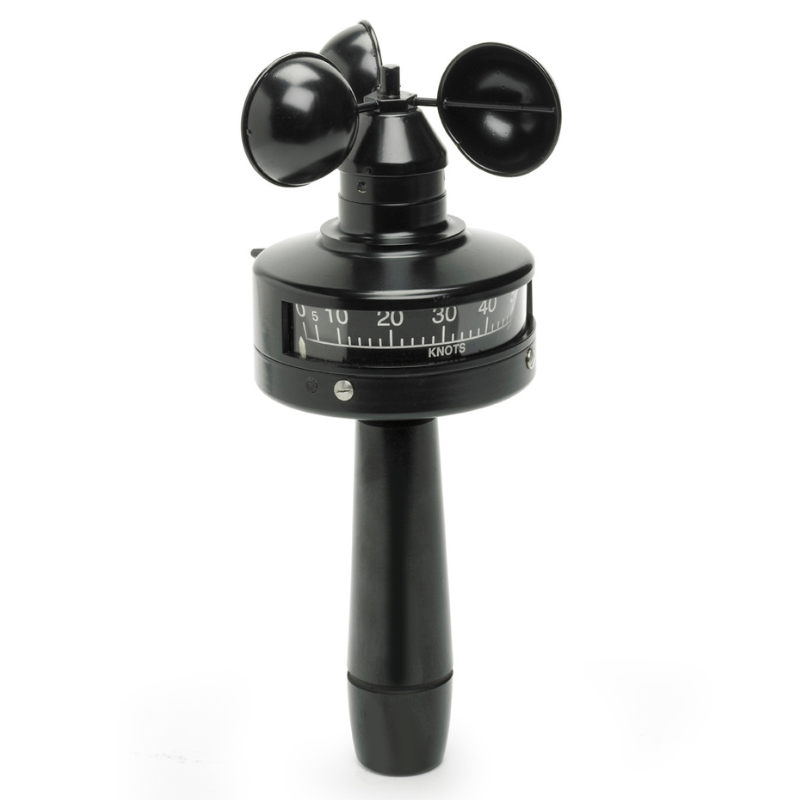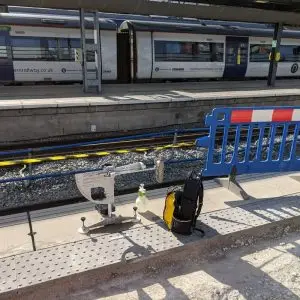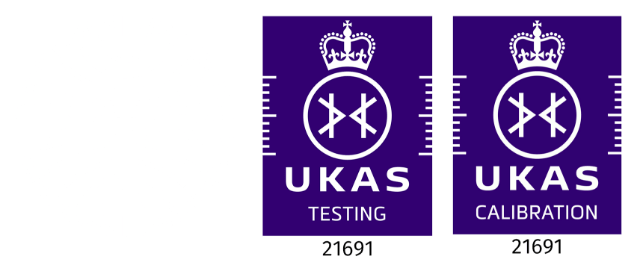An anemometer is an instrument used to measure wind speed and sometimes direction. First developed in the 15th century, anemometers have evolved from simple mechanical devices to sophisticated digital instruments equipped with sensors, GPS, and real-time data transmission.
Cup Anemometers
The most common type, consisting of three or four cups mounted on arms that rotate as the wind blows. Widely used in wind farms due to their reliability and durability.
Vane Anemometers
These measure both wind speed and direction using a propeller and a tail vane. Ideal for portable applications and quick measurements.
Hot-wire Anemometers
Highly sensitive devices that measure wind speed based on temperature fluctuations caused by air movement. Used in research and precision applications.
Sonic Anemometers
Use ultrasonic waves to measure wind speed and direction. They provide accurate data even in extreme conditions, making them ideal for high-tech wind energy projects.
Laser Doppler Anemometers
Advanced technology that uses laser beams to detect wind movement. Best for research and highly precise wind measurements.
Why Wind Measurement is Crucial for Renewable Energy
Accurate wind data is the backbone of the wind energy industry. By measuring wind speed and direction, energy producers can:
- Identify the best locations for wind farms
- Optimize turbine placement for maximum efficiency
- Predict and adjust energy output based on wind conditions
Anemometers in the Wind Power Industry
Anemometers help wind farm developers and operators make data-driven decisions. They allow:
- Assessment of wind potential before constructing wind farms
- Real-time monitoring for optimizing energy production
- Better forecasting to reduce power fluctuations
How Anemometers Improve Energy Production
By continuously monitoring wind conditions, They help:
- Increase wind turbine efficiency
- Reduce downtime by predicting maintenance needs
- Enhance energy storage and grid stability
Anemometer for Renewable Energy
Factors to consider:
- Accuracy – Higher precision for better energy optimization
- Durability – Weather-resistant models for extreme conditions
- Connectivity – Wireless and cloud-based data access
Installation and Maintenance of Anemometers
To ensure reliability, They should be:
- Installed at optimal heights
- Regularly calibrated for accuracy
- Inspected for wear and tear
Uses of Anemometers for Renewable Energy
- Wind Resource Assessment
- Before installing wind turbines, They are used to analyze wind patterns over time. This helps determine the feasibility of a location for wind energy production.
- Accurate wind speed measurements ensure turbines are placed in areas with optimal wind conditions, maximizing energy output.
- Wind Turbine Performance Monitoring
- Anemometers continuously measure wind speed to assess the performance of wind turbines.
- Data is used to adjust turbine operations, such as blade angles, to improve efficiency.
- If wind speeds exceed safety limits, anemometers trigger automatic shutdowns to prevent damage.
- Weather Forecasting for Renewable Energy Planning
- Anemometers contribute to weather forecasting models that predict wind and solar power generation capacity.
- This data helps grid operators balance energy supply and demand, ensuring a stable energy output.
- Optimization of Solar Panel Efficiency
- In solar farms, anemometers monitor wind conditions to assess cooling effects on photovoltaic panels.
- Wind speed data is used to determine the impact of dust and debris accumulation, which can reduce efficiency.
- Ensuring Safety in Renewable Energy Facilities
- High wind speeds can pose risks to wind turbines and solar panel installations.
- They provide real-time alerts to maintenance teams, allowing them to secure equipment and prevent damage.
- Integration with Smart Grid Systems
- Smart anemometers provide real-time wind data that helps utilities manage renewable energy input to the grid.
- They support automated systems that adjust power generation based on wind availability.
- Research and Development
- Scientists use them to develop advanced wind turbine designs that perform better in varying wind conditions.
- Wind tunnel testing and field studies rely on anemometer data to enhance renewable energy technologies.

